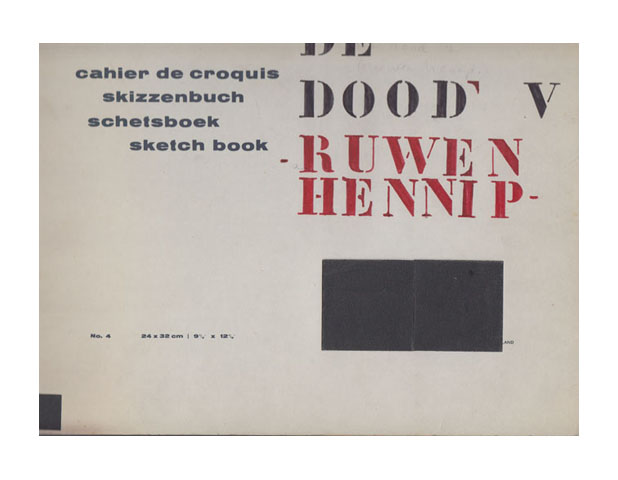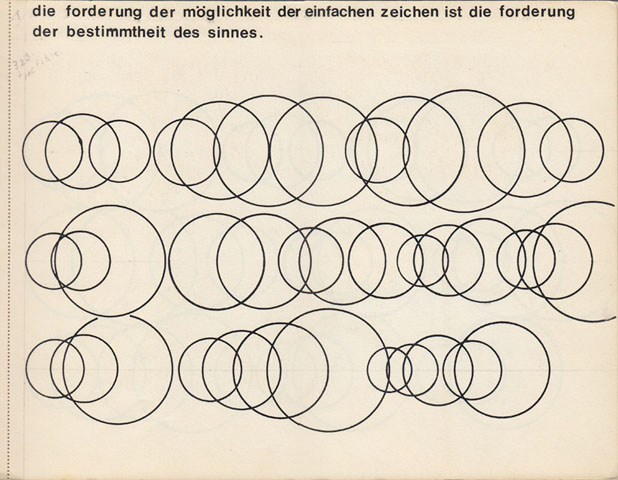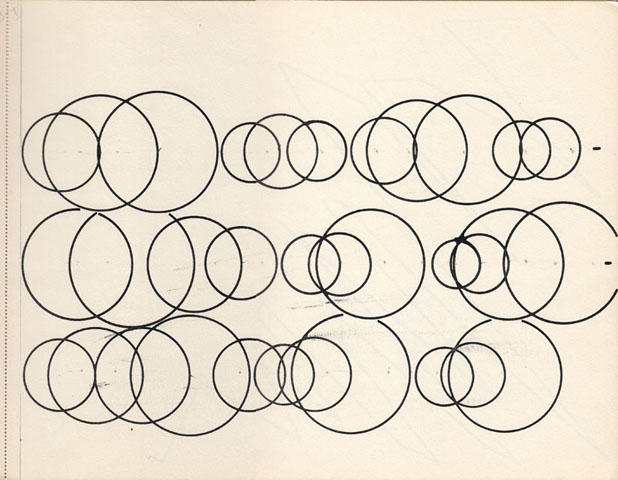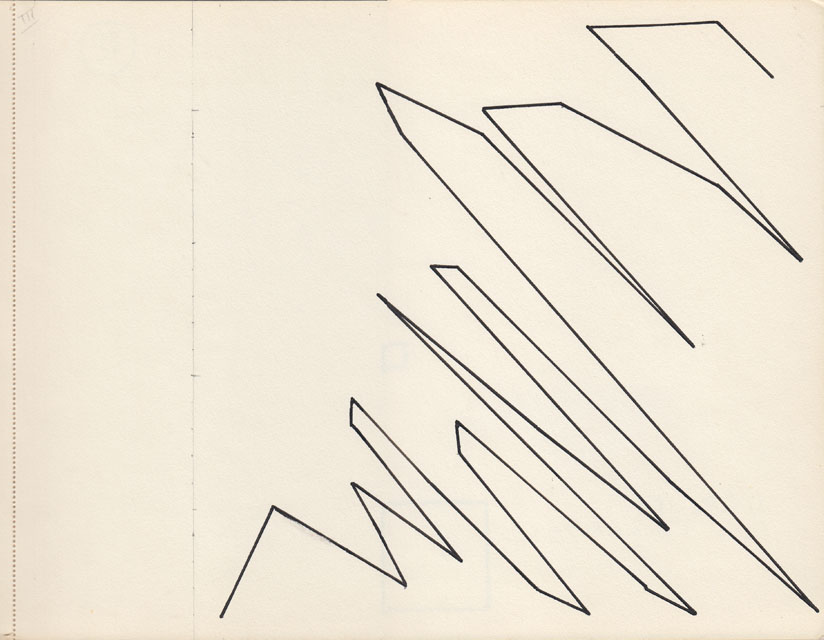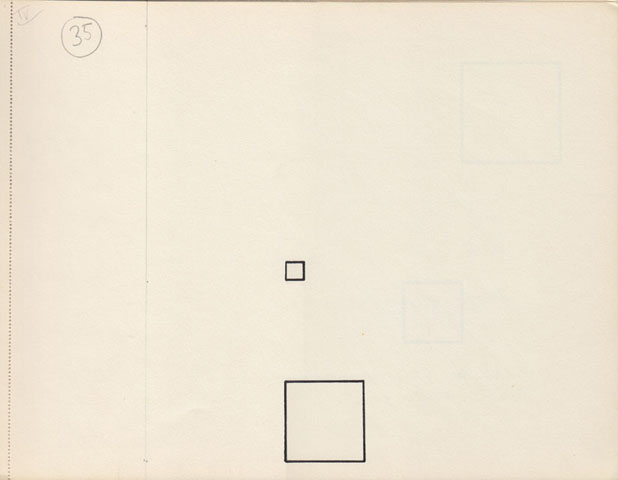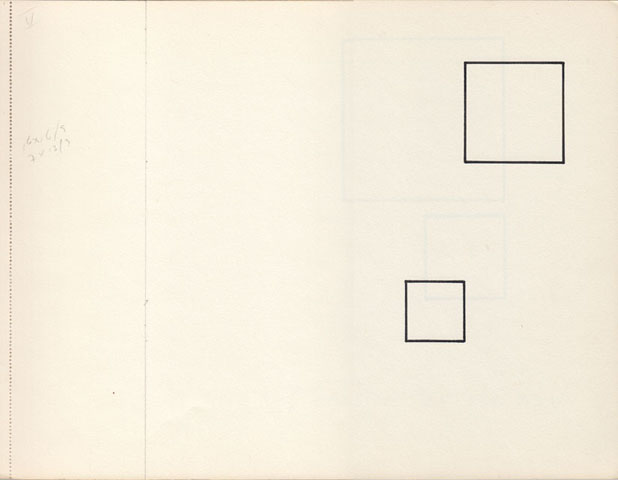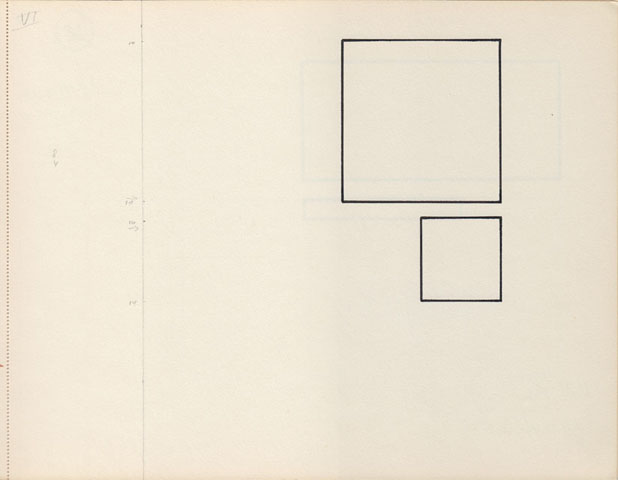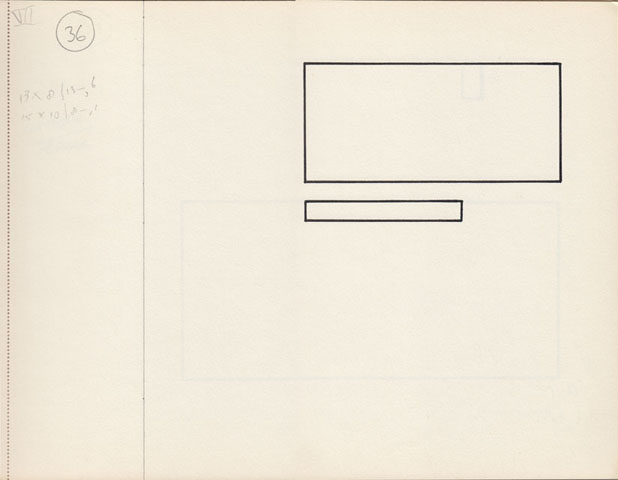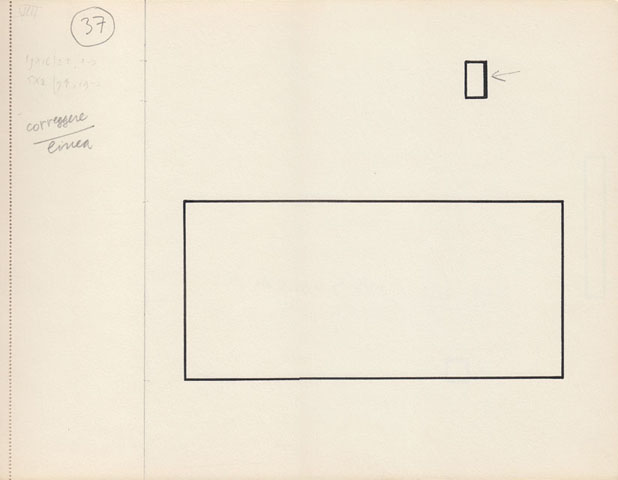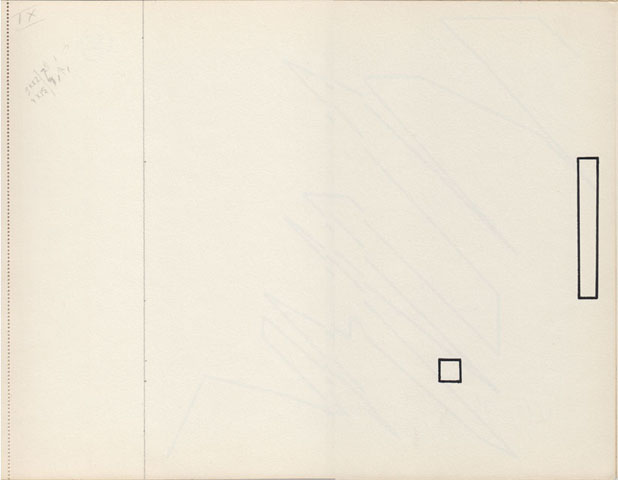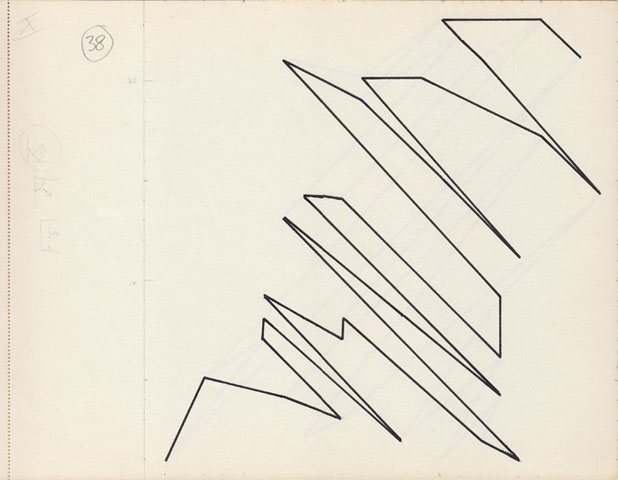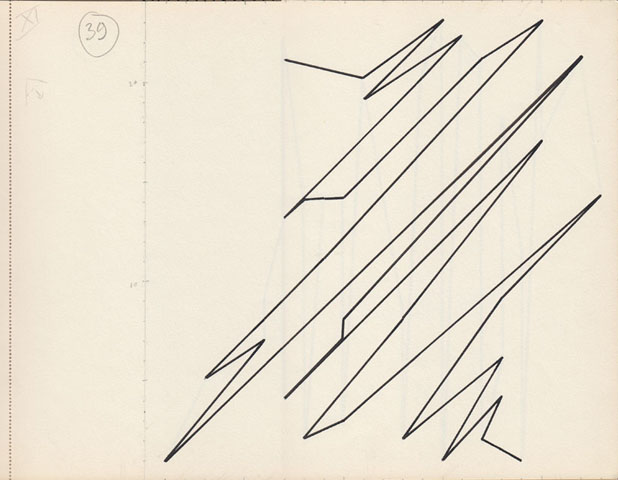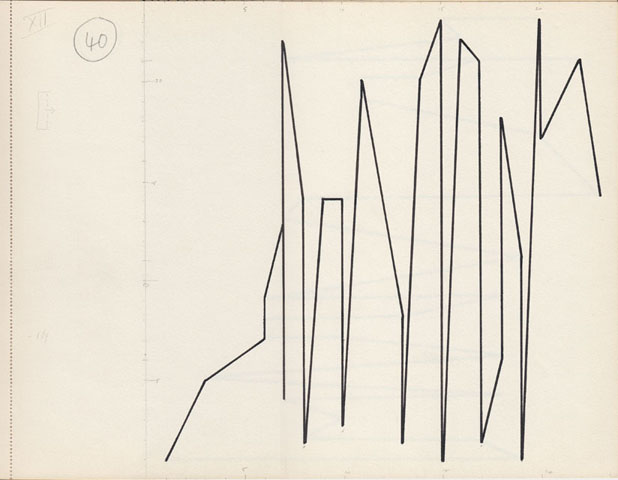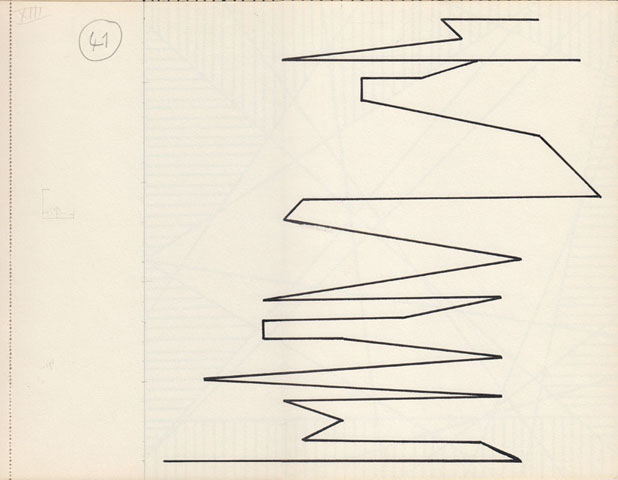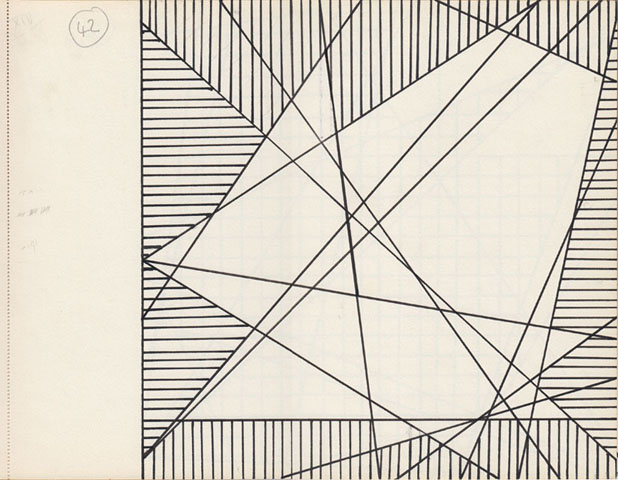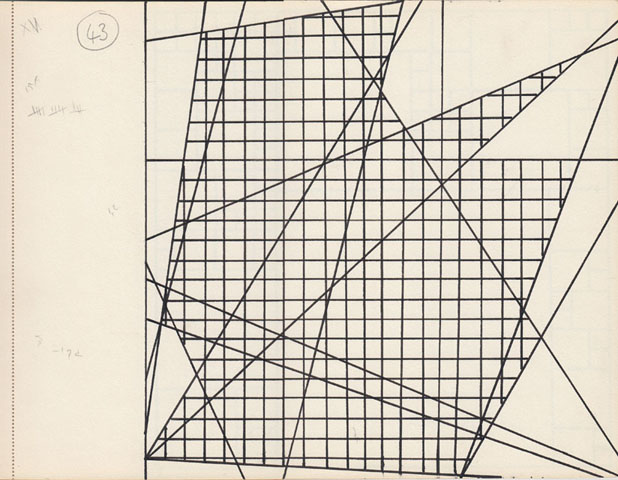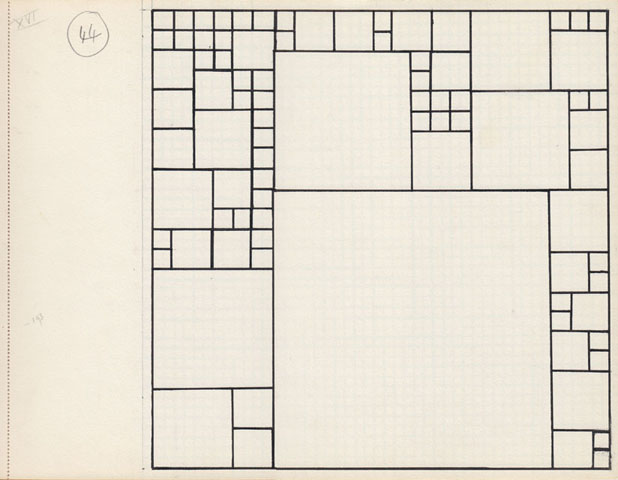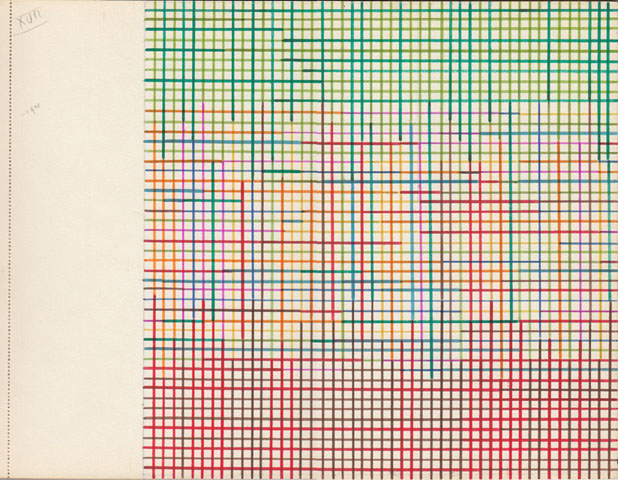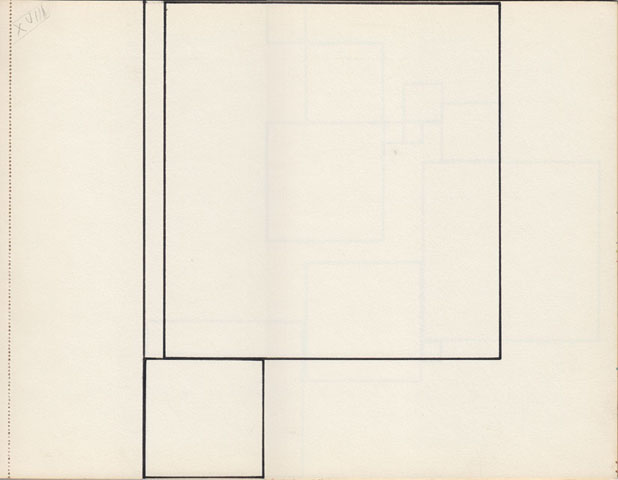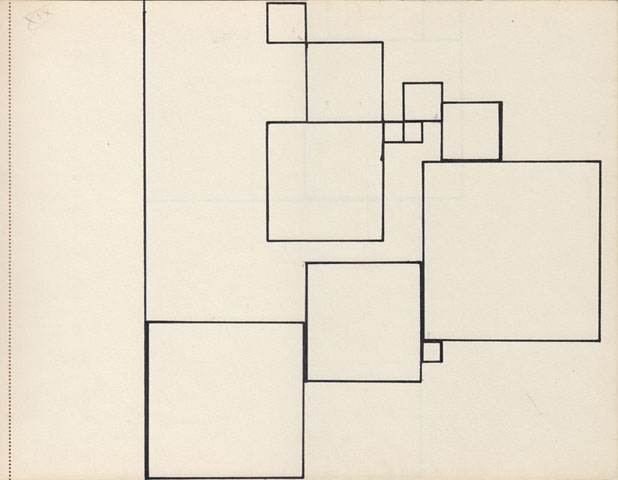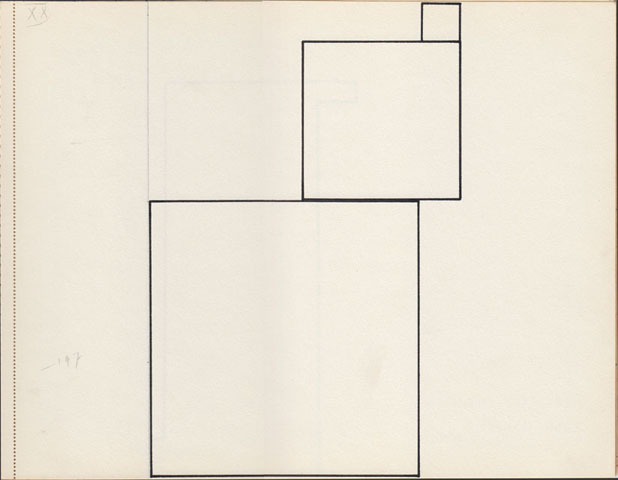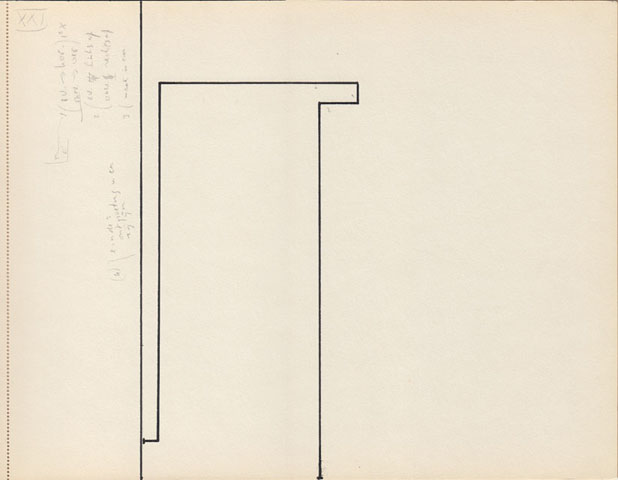I. [v68-178a] circles and text in rub-off letters ('die forderung der möglichkeit der einfachen zeichen ist die forderung der bestimmtheit des sinnes' [source: L. Wittgenstein, Tractatus logico-philosophicus 3.23.); the letters are translated to circles; black ink, rub-off letters with graphite pencil on paper
II. [v68-178b] circles; black ink with graphite pencil on paper
III. [v68-180] based on the same points as v68-177 but here connected from the left bottom corner; this is achieved by shifting an imaginary line between the axes and connect the first next point inside the field (if there is more than one point, first the closest point) [one mistake: the point in the right bottom corner (note herman de vries)]; black ink with graphite pencil on paper
IV. [v68-181] two squares (selected from a range 1-24 → 1 × 1 and 4 × 4 cm) arranged with at random selected place and size; black ink with graphite pencil on paper
V. [v68-182] two squares (selected from a range 1-24 → 3 × 3 and 5 × 5 cm) arranged with at random selected place and size [program as v68-181]; black ink with graphite pencil on paper
VI. [v68-183] two squares (selected from a range 1-24 → 4 × 4 and 8 × 8 cm) arranged with at random selected place and size [program as v68-181]; black ink with graphite pencil on paper
VII. [v68-184] two rectangles (selected from a range 1-24) arranged with at random place and size [program as v68-181]; black ink with graphite pencil on paper
VIII. [v68-185] two rectangles (selected from a range 1-24) arranged with at random place and size [program as v68-184]; black ink with graphite pencil on paper
IX. [v68-186] two rectangles (selected from a range 1-24) arranged with at random place and size [program as v68-184]; black ink with graphite pencil on paper
X. [v68-187] based on the same points as v68-177 but here connected from the left bottom corner; this is achieved by shifting an imaginary line between the axes and connect the first next point within the field (if there is more than one point, first the closest point) [program as v68-180 but without mistake] ; black ink with graphite pencil on paper
XI. [v68-188] based on the same points as v68-177 but here connected from the top left corner; this is achieved by shifting an imaginary line between the axes and connect the first next point within the field (if there is more than one point, first the closest point) [program as v68-187 but starting from the top left corner]; black ink with graphite pencil on paper
XII. [v68-189] based on the same points as v68-177 but here connected from the left side; this is achieved by shifting an imaginary line between the axes and connect the first next point within the field (if there is more than one point, first the closest point) [program as v68-187 but starting from the left side]; black ink with graphite pencil on paper
XIII. [v68-190] based on the same points as v68-177 but here connected from the bottom side; this is achieved by shifting an imaginary line between the axes and connect the first next point within the field (if there is more than one point, first the closest point) [program as v68-187 but starting from the bottom side]; black ink with graphite pencil on paper
XIV. [v68-191] 15 lines connecting randomly selected points on randomly selected sides; the resulting fields adjacent to the sides are shaded; black ink with graphite pencil on paper
XV. [v68-192] 15 lines connecting randomly selected points on randomly selected sides; the resulting fields not adjacent to the sides are shaded [program as v68-191 but different shading]; black ink with graphite pencil on paper
XVI. [v68-193] squares are drawn in horizontal direction with randomly selected size (1-23 → 1-14); the open spaces on the sides are filled in with small squares; black ink with graphite pencil on paper
XVII. [v68-194] 3 areas (A-C) are made in vertical direction (A = 10 cm, C = 4 cm and C = 4 cm); A is at random red + brown, C is light and dark green and the length of the lines (at a distance of 0.5 cm to each other) at random 5-10 cm, B is in 9 colours and the length of the line is 4 cm; in horizontal direction more or less the same with different length and colours; coloured ink with graphite pencil on paper
XVIII. [v68-195] squares with randomly selected size (1-22 cm) starting from the left bottom corner; the next square is arranged on an at random selected place and side; the work is finished when an other side is reached; black ink with graphite pencil on paper
XIX. [v68-196] squares with randomly selected size (1-22 cm) starting from the left bottom corner; the next square is arranged on an at random selected place and side; the work is finished when an other side is reached [program as v68-195]; black ink with graphite pencil on paper
XX. [v68-197] squares with randomly selected size (1-22 cm) starting from the left bottom corner; the next square is arranged on an at random selected place and side; the work is finished when an other side is reached [program as v68-195]; black ink with graphite pencil on paper
XXI. [no work number] squares with randomly selected size (1-22 cm) starting from the left bottom corner; the next square is arranged on an at random selected place and side; the work is finished when an other side is reached [program as v68-195]; black ink with graphite pencil on paper

